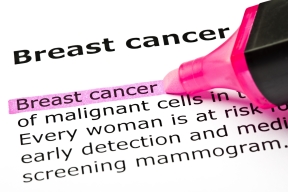Understanding Breast Cancer Screening and Risk: A Conversation with McLeod Health’s Dr. Shawn Conwell
Medically Reviewed by W. Shawn Conwell, MD, FACR
October is Breast Cancer Awareness Month, a time dedicated to educating women about the importance of early detection and proactive healthcare. To shed light on breast cancer diagnosis, screening, and risk factors, Dr. Shawn Conwell, a Radiologist and Medical Director of Oncology and Women’s Services for McLeod Health, recently sat down for a Question and Answer session.
Question: How is breast cancer diagnosed?
Answer: In a nutshell—through a mammogram. Screening mammograms allow us to detect abnormalities early. If something looks suspicious, we call the patient back for additional imaging and, if needed, a biopsy. It’s at the point of biopsy that we confirm a diagnosis of breast cancer.
Q: You and your team always stress being proactive rather than reactive. When should a woman begin getting mammograms, and how often should they continue?
A: For women at average risk, screening should begin at age 40, and continue every year thereafter. As long as a woman remains healthy and willing to undergo treatment should cancer be detected, she should continue annual screenings.
Q: Technology is constantly advancing—3D mammography, digital imaging, and so on. What type of mammogram is best?
A: Digital mammography has improved upon traditional 2D imaging in many ways. Beyond that, we now use 3D mammography, which takes multiple images from different angles and reconstructs the breast in thin “slices.” This allows us to view tissue more clearly and reduces overlap, making it easier to detect even subtle changes.
Q: Are some women more at risk for breast cancer than others?
A: Yes, absolutely. There’s a spectrum of risk. When a woman comes in for a mammogram, we assess her underlying risk based on personal, family, and hormonal history to determine how to tailor her care.
Q: Why are patients asked to complete a health risk assessment before a screening mammogram?
A: This information helps us interpret the mammogram more accurately. If a woman has higher risk factors, we’ll be more cautious in evaluating subtle findings. Knowing her risk allows us to be more proactive in assessing anything that looks unusual.
Q: Why do we hear so much about breast cancer compared to other cancers? Is it really that common?
A: It is. One in eight women will be diagnosed with breast cancer during her lifetime. That’s why screening and awareness are so vital.
Q: Hearing the word “cancer” can cause immediate fear. Why shouldn’t we panic the way people used to?
A: I like to focus on another “C” word—cure. When we find breast cancer early, it’s often highly treatable. Treatments may include surgery, radiation, chemotherapy, or hormonal therapy—but early detection dramatically increases the likelihood of a cure.
Q: You mentioned risk assessment earlier. How are those responses actually used in patient care?
A: We use a tool called the Tyrer-Cuzick score to categorize a woman’s risk as average, intermediate, or high.
- Average risk is about 12%, or one in eight women.
- Intermediate risk ranges from about 15 to 19%.
- High risk is 20% or higher.
We look at several factors—hormonal (like early menstruation or late childbirth), family and genetic history, and demographic data. Combining these factors gives us a more complete picture of a woman’s overall risk and helps guide our recommendations for screening and prevention.
-
McLEOD REGIONAL MEDICAL CENTER FLORENCE
843-777-2000 -
McLEOD DARLINGTON
843-777-1100 -
McLEOD DILLON
843-774-4111 -
McLEOD LORIS
843-716-7000 -
McLEOD SEACOAST
843-390-8100 -
McLEOD CHERAW
843-537-7881 -
McLEOD CLARENDON
803-433-3000



-
McLEOD REGIONAL MEDICAL CENTER FLORENCE
843-777-2000 -
McLEOD DARLINGTON
843-777-1100 -
McLEOD DILLON
843-774-4111 -
McLEOD LORIS
843-716-7000 -
McLEOD SEACOAST
843-390-8100 -
McLEOD CHERAW
843-537-7881 -
McLEOD CLARENDON
803-433-3000
 Find a Doctor
Find a Doctor  Locations
Locations  Services
Services 